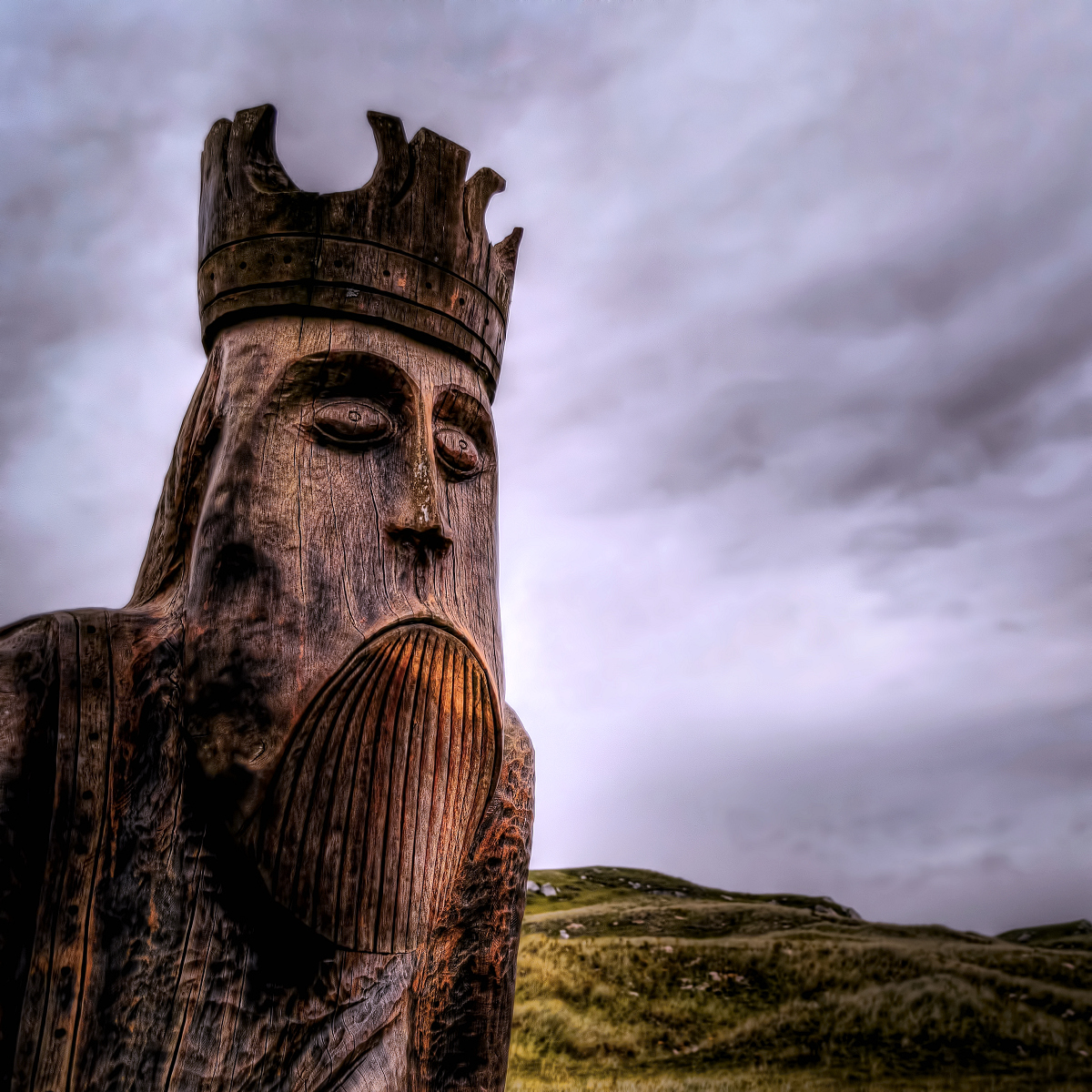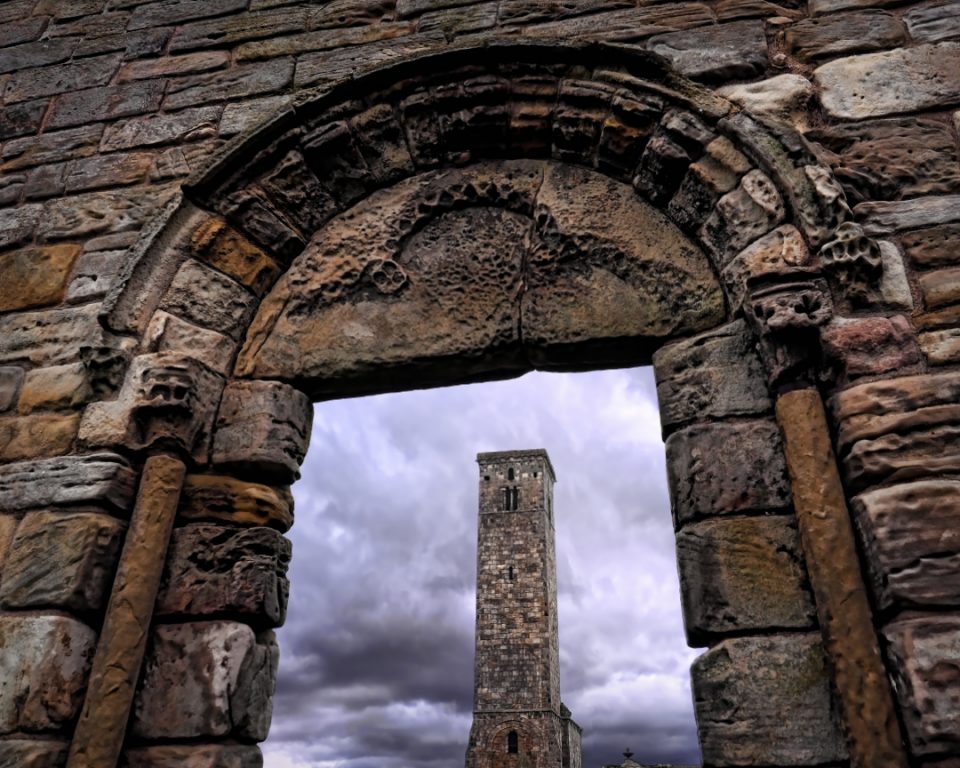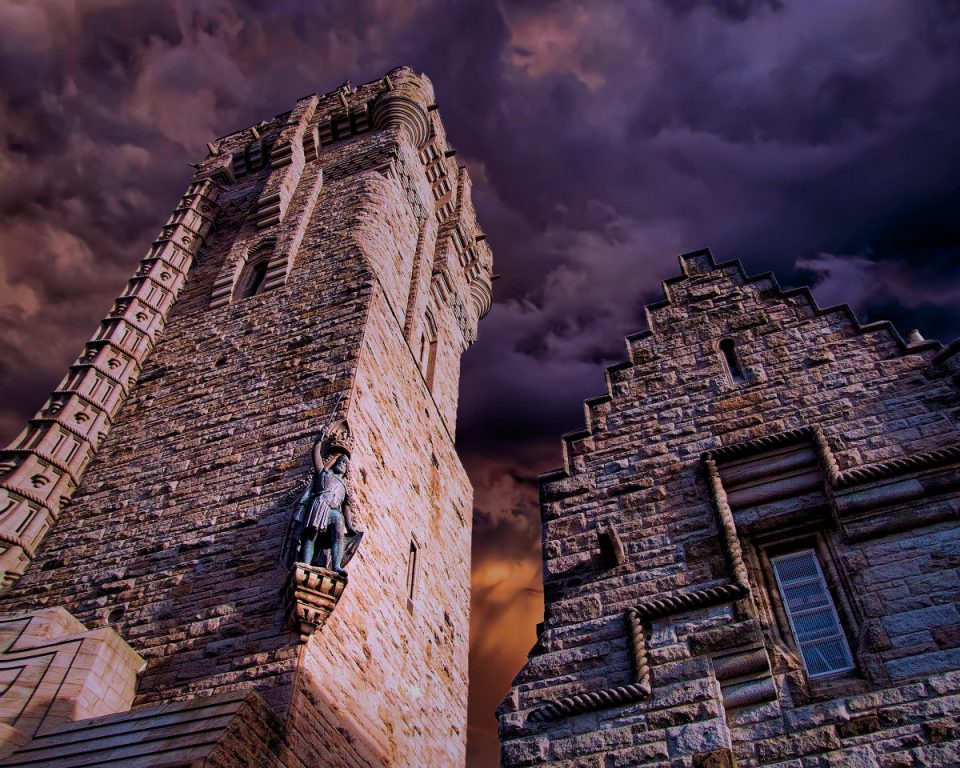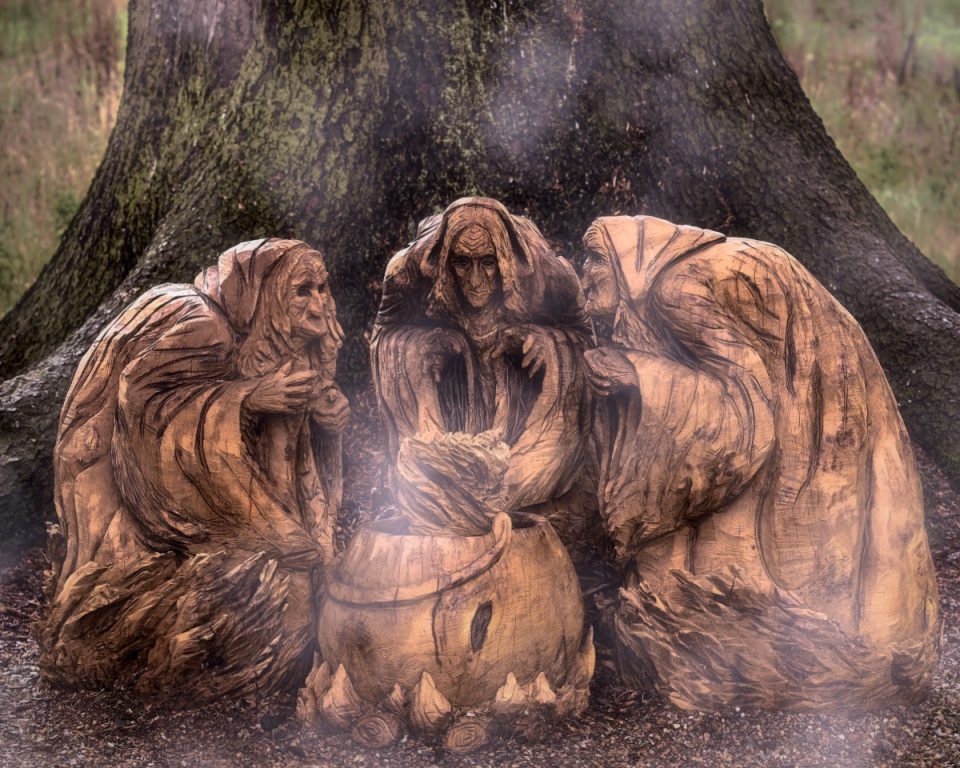In 874 AD Maelbrigte the Tooth appeared from the shadows of Scottish history. Little is recorded of his life: most of what is known concerns his death. This is an account of Viking treachery and duplicity, of a Scottish army, crushed and of poetic justice.
Maelbrigte: The Pict
During Maelbrigte’s lifetime he would have witnessed a massive power shift. Scotland, in the ninth century, did not exist as a nation. It was still a land of several kings and rulers. Maelbrigte, coming from the North East of Scotland was likely to have been Pictish. The Celtic Picts are a shadowy, enigmatic people in Scottish history: they left no written records. Instead, they left beautiful carved stones: not the stone circles of the Stone Age people, for these were highly skilled artisans who were the descendants of the indigenous Iron Age people of Scotland.
Originally, the Picts would have been a fragmented group of tribes who united to defend themselves against the Romans. Later they successfully defeated the Angles of Northumbria to become the largest and most dominant kingdom in Dark Age Scotland. However, that was set to change.
The Rise of the Dalriadic Scots
The country west of the Grampian Mountain Range was occupied by another group of Celtic people; The Scotti. Until recently it was thought that the Scotti had come from Antrim in Ireland and had settled in the area around Argyll. New evidence indicates that this was not the case but because of the proximity between the two islands, there would have been a lot of interchanges and cultural sharing between the Scotti and the Irish.
The Scotti formed their kingdom of Dál Riata with its capital at Dunadd, Arygyll. This was also where their kings were crowned.
Whereas it is thought the Picts spoke a language similar to Brythonic, the Scotti were Gaelic speaking. Both groups were initially pagan, believing in magic and ritual sacrifice. However, the Dalriadic Scots became converted to Christianity with the arrival of Saint Columba. The monks brought with them books and the skills of reading and writing.
Around the year 810 AD Cináed mac Ailpín was born. He is better known by his anglicised name Kenneth MacAlpin. Although a Gael and heir to the Dalriadic throne, historical sources suggest that his mother was a Pictish princess. Around 839 AD, Viking raids almost completely wiped out the Pictish monarchy. It is here that Kenneth makes his big appearance into the annals of Scottish history. In the power vacuum that followed as a result of the Viking slaughter of the Pictish royal line, MacAlpin lays claim to the Pictish throne. At some point between 839 and 848 AD Kenneth, with blood claims to both thrones, became King of both Picts and the Gaels. This sounded the death knell of the Pictish people whose way of life became engulfed by their Gaelic speaking neighbours.
Maelbrigte: The Maormor of Moray
Maelbrigte was the son of Ruadri or Rory and was the Maormor of Moray. During his lifetime the land was divided into Provinces and smaller thanages. Maormor was the highest title of honour in ancient Scotland and granted the title-bearer jurisdiction over extensive provinces. The word Maormor comes from the Gaelic maor (steward) and mhor (great). When the feudal system was introduced to Scotland during the reign of King David I, the Maormers became Earls. Significantly, the Vikings referred to the Maormors as Scota Jarls. The Province of Moray was much larger than the present-day county and stretched into great tracts of what is presently the Highlands.
As has been ascertained, Maelbrigte lived in a time of great change in Scotland. Just sixteen years before the events of this story take place, Kenneth McaAlpin died. His son, Constantine, would lose his life two years after the events of the tale take place, while defending his country from the Norsemen. Not only was Maelbrighte’s culture under threat: his lands were too.
History has left little record of most of Maelbrigte’s life except that according to the Scandinavian Sagas he was surnamed ‘The Tooth’ because of a protruding buck-tooth.
Maelbrigte and the Orkneyinga Saga
Most of what we know about Maelbrigte was recorded in the Orkneyinga Saga. This work was written around 1200 by an unknown author. It is an intriguing fusion of myth, legend and history. It is the only medieval work to have Orkney as its setting. This was an era when Orkney was part of the Viking world, beginning with its conquest by the kings of Norway in the ninth century. The Saga tells of the subsequent history of the Earldom of Orkney and the great adventures, brutal battles and family feuds of the Norsemen who ruled over these islands. One of the great heroes of this work is Sigurd the Powerful, the antagonist of this tale.
Sigurd The Powerful: Maelbrigte’s Antagonist
The Vikings had become the new players in the power struggle which would ultimately see the birth of the nation we now recognise as Scotland. In typical Viking fashion, invasion, conquest and grand sea adventures played important roles in their agenda. One of these new power brokers was Sigurd the Powerful or Sigurd Eysteinsson who lived between 832 and 874 AD. According to the Orkneyinga Saga, he was the first Earl of Orkney. Although the saga elucidates that Earl Sigurd I was one of the three great earls of Orkney, it actually documents more about his death than his reign.
Sigurd enters the saga as the forecastleman of one of King Harald Fairhair’s ships, on their journey to conquer Orkney, Shetland and the Western Isles. Harald’s forces seized Orkney and Shetland before going on to the Hebrides and the Isle of Man. During the campaign, Sigurd’s brother, Earl Rognvald of More, lost his son, Ivar in battle. In compensation, King Harold bestowed upon him the Earldom of Orkney.
Rognvald did not intend staying on the islands so passed the earldom to Sigurd, who became Earl Sigurd I of Orkney. The saga tells us little more than he became a great ruler.
Maelbrigte: A Victim of Duplicity
Earl Sigurd had formed an alliance with Thorstein the Red, travelling south into Scotland where they conquered all of Caithness and large parts of Argyll, Moray and Ross. Maelbrigte’s native tongue and culture were already under threat and now it seemed that his lands were slipping out of his grasp.
A meeting was arranged between the two leaders to settle their differences. Each of them was to bring forty men to the battlefield. However, the Norseman did not trust the Scots and on the appointed day, mounted eighty men on forty horses.
Alas, Maelbrigte was a man of honour. Imagine his horror when he saw two men’s legs on the flanks of each horse? Rallying his men, he told them they must try to kill at least one man before their enemy sent them to their Maker.
When Sigurd saw what the Scots had in mind, he ordered half his men to dismount and outflank his opponents while the those on horseback would charge into their ranks with the aim of breaking them.
Maelbrigte Defeated
As valiantly as the Scots fought, it was not long before Maelbrigte and his men were dead. Sigurd ordered that his opponents’ heads be chopped off and attached to the victors’ saddles in a show of triumph. The Norsemen rode back home flushed with success.
Maelbrigte gets his Revenge
Emboldened by his victory, Sigurd spurred his horse onwards but, in the process, struck his calf on the tooth sticking out of Maelbrigte’s mouth. It was nothing more than a scratch and he thought nothing more of it. But in the coming days, the wound began to swell and ache. No doubt, blood poisoning set in or the wound turned gangrenous. Maelbrigte had avenged his killer. Sigurd died and was buried at “Ekkjalsbakki” on the banks of the River Oykell in Scotland. Although the exact location is unknown, the area of Sigurd’s grave is now known as Ciderhall, a corruption of the Norse words meaning “Sigurd’s Howe”.




